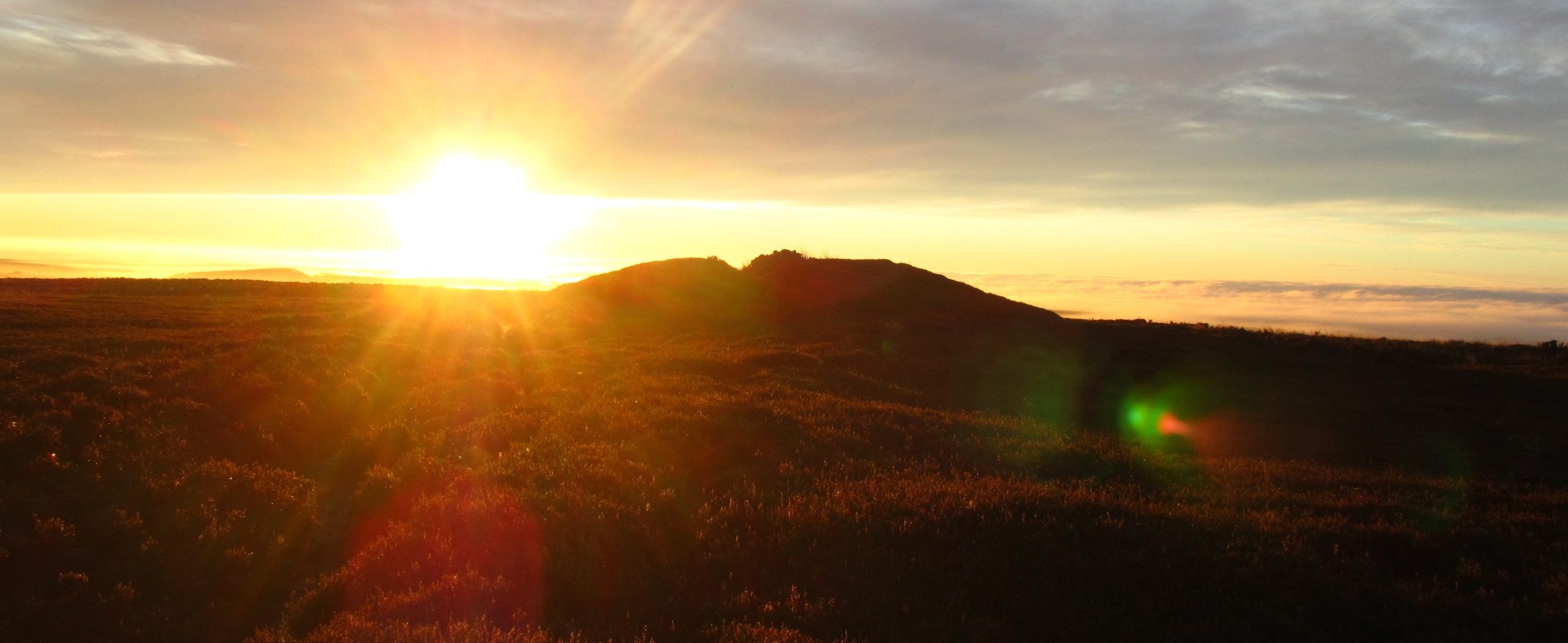
The New Lyke Wake Club
A 40-mile crossing of the North York Moors

A 40-mile crossing of the North York Moors
A 40-mile crossing of the North York Moors
THE LYKE WAKE WALK is a complete crossing of the North York Moors along their main east-west watershed between the Stone at grid reference 470994 and the Trig point at 971012, a distance of approximately 40 miles. Every person who completes a crossing of the Lyke Wake Walk on foot within a period of 24 hours, and who reports it to the Club, is eligible for membership. There is no membership fee. Female members are titled Witch and males are titled Dirger.
The Lyke Wake Club is open to all those who have completed a crossing of the Lyke Wake Walk, collects information about the walk, furthers the interest of those who do the walk and encourages members to learn about the moors, its history and folk-lore.
Wakes (gatherings of Club Members) are held periodically – the traditional dress being black. At these wakes, accounts of crossings are related – and washed down with appropriate beverage! Various degrees are awarded to persons completing multiple crossings of the Walk (Master/Mistress of Misery, Doctor of Dolefulness, Past Master).
A new page has been set up offering Dirgers and Witches the opportunity to comment on your Lyke Wake walk experiences. Although there are several formal questions, the reality of what anybody wishes to say is left very much up to the individual
As usual, please respect the moors (Countryside Code) taking particular care during periods of adverse weather. During hot weather there can be a severe fire risk and the route may be closed at short notice – more about this on the Preparations page. Winter can be equally challenging: the Lion Inn at Blakey Ridge was cut off for eight days in December 2010.
Please avoid any disturbance to people who live on or near the route. Please refrain from bringing vehicles into Osmotherley and Ravenscar during ‘antisocial’ hours and likewise avoid making noise near residential areas such as Scugdale. And please ensure that all gates are closed after your party has gone through to prevent livestock escaping.
Equally, please take care not to disturb wildlife on this fragile environment that is home to a number of rare and important species. This is particularly true on Fylingdales Moor, which is now managed for conservation.
Fastest Crossing: Mark Rigby (1984 ) 4 hours 41 minutes ( Mast – Osmotherley village )
Fastest Lady: Helene Diamantides ( 1992 ) 5 hours 30 minutes ( Mast – Osmotherley village )
Fastest Crossing West-East by the Classic route: C Garforth and M Turner in 4 hours, 58 minutes, 7 seconds.
Most Crossings: Gerry Orchard (at least 235). – Still “sort of alive”
Other Centenerians: Ben Hingston 212 ( Last on 9th February 1984 ). Died October 1985. Ian Ashley Cooper ( 157 Crossings ). Died 28th December 2003. The first person to complete 100 crossings was Louis Kulcsar on 17th November 1973.
Youngest crosser: Christopher Turton at 6 years old
Oldest crosser : Several people in their 80s have crossed (sadly no further details).
The Lyke Wake Walk is a forty-mile crossing of the North York Moors from Osmotherley to Ravenscar essentially following the line of the watershed across the moors at its widest point.
The late Bill Cowley originated the concept of the walk with an open challenge in the Dalesman in August 1955 to cross the moors on foot from West to East within 24 hours. At noon on 1st October that year, eleven men and three women set out to perform a crossing reaching Ravenscar around 10.30 the next day. The Lyke Wake Club was born (derived from ‘Wake’ – watching over a corpse, ‘Lyke’ – the corpse itself).
All of the men and two of the women completed the course, they were the founder members of the club:
B.Ovenden
A.Pendegrass (F)
D.Pearson
J.Poulter
M.Walker
I.Watters
S.Boaden (F)
W.Cowley
B.Dell
J.Grayson
D.Kirby
T.Lea
D.Laughton
Anyone having completed, or even attempted the Lyke Wake Walk will be very familiar with its association with the theme of death! The emblem of the coffin associated with the Lyke Wake walk is no accident – and is totally appropriate.
There are no honorary members of the Club – it is entered only by the ‘ordeal’ of completing a crossing! Back in the mid seventies, crossings were at the rate of over 6000 per year. In 1978, 10,000 people reported crossing the walk.